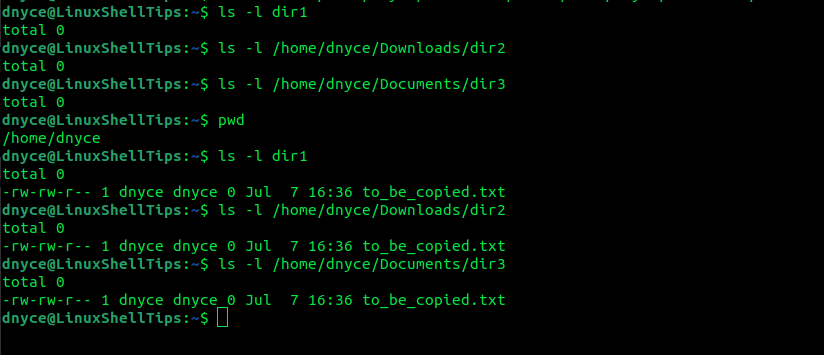

- #SSH COPY INTO DIRECTORY HOW TO#
- #SSH COPY INTO DIRECTORY INSTALL#
- #SSH COPY INTO DIRECTORY PASSWORD#
- #SSH COPY INTO DIRECTORY PROFESSIONAL#
- #SSH COPY INTO DIRECTORY DOWNLOAD#
You will also be asked for the password to the Linux system after executing the above command. In the above command, 192.168.0.18 is a sample IP address of the Linux system. Here is the command structure to transfer data using pscp: Path/to/pscp ]host:source destinationįor example, to copy a file called “file.txt” located in Windows to a tmp directory in Linux, use this command: C:\Program Files\PuTTY>pscp \Users\user\file.txt :/tmp You will also be needing the IP address of the Linux device, which can be found out using the ipconfig command.

We need to give the path information of source and destination. With PuTTY’s pscp, moving files between Windows and Linux is straightforward.
#SSH COPY INTO DIRECTORY INSTALL#
To install an SSH server, Debian based Linux systems such as Ubuntu can use these commands: sudo apt updateįor Red Hat and other related Linux systems, sudo yum install openssh-server Also, note that port 22 needs to be open to allow the connections.
#SSH COPY INTO DIRECTORY DOWNLOAD#
Users first need to download and install PuTTY pscp or other tools from here for the Windows and have an SSH-server setup and running on the Linux system. PuTTY’s pscp allows users to securely copy files between Windows and Linux systems. PuTTY comes with a terminal emulator for remote logins and also comes with tools like pscp (PuTTY secure copy client). For the readers who do not have PuTTY installed on their computers, you can easily download, install, and set up PuTTY from for free.

To use SSH for transferring data between Windows and Linux, we will first need an SSH client such as PuTTY. Secure Shell (SSH) protocol is a method for secure remote login and file transfer.

In this article, we are going to understand different ways of easily copying data between Linux and Windows. Therefore, sharing files between these two can be crucial more often now.
#SSH COPY INTO DIRECTORY PROFESSIONAL#
While Windows is the go-to operating system for many, Linux is gaining traction and is being used by many across the globe for personal and professional use. While the process of transferring data on cross-platforms such as in between Windows and Linux can be a little tricky, with the right tools and some accommodation, the process can be surprisingly easy. Transferring data from one operating system to another, such as from Windows to Linux or the other way, can be even more stressful.
#SSH COPY INTO DIRECTORY HOW TO#
On a related note, if you need help getting sudo set up so you don't have to type the root password, see How to enable sudo on Red Hat Enterprise Linux.Copying data from one device to another is often considered an intimidating process. However, all you have to do in order to renew is log in to again. The developer subscription period is one year. Using your Red Hat ID, you'll have access to the articles and knowledgebase on. Keep in mind that when you join the Red Hat Developer Program, a no-cost developer subscription is automatically added to your account. No restarts are necessary.įor more details, see How to setup SSH passwordless login in Red Hat Enterprise Linux on the Red Hat Customer Portal. Now you should be able to connect from your computer to the remote system. On the remote system, edit ~/.ssh/authorized_keys and append the output of the cat command above. $ chmod 600 ~/.ssh/authorized_keys #this is important. This is your public key that needs to be added to ~/.ssh/authorized_keys on the remote server. copy the line from ssh-rsa to your so that's it is on the clipboard, or put it on a USB stick, or write it onto paper and send it via a delivery pigeon. This can be difficult to diagnose if you don't have root access to check the logs. ssh directory and files are incorrect, it will still ask you for the password. This includes the steps to set the proper permissions. ssh-copy-id when ssh-copy-id is not available for use, you can do the following. What about when you can't use ssh-copy-id or the target user ID doesn't have a password (for example, an Ansible service user)? This article explains how to do it manually and avoid the common pitfall of forgetting to set the proper permissions. If you are conditioned to respond with your password every time you are prompted, you might not notice a prompt that isn't legitimate (for example, spoofed). Also, using ssh keys correctly is considered a best practice. This is not only for convenience it enables you to script and automate tasks that involve remote machines. We often use ssh-copy-id to copy ssh keys from our local Linux computers to RHEL servers in order to connect without typing in a password.


 0 kommentar(er)
0 kommentar(er)
